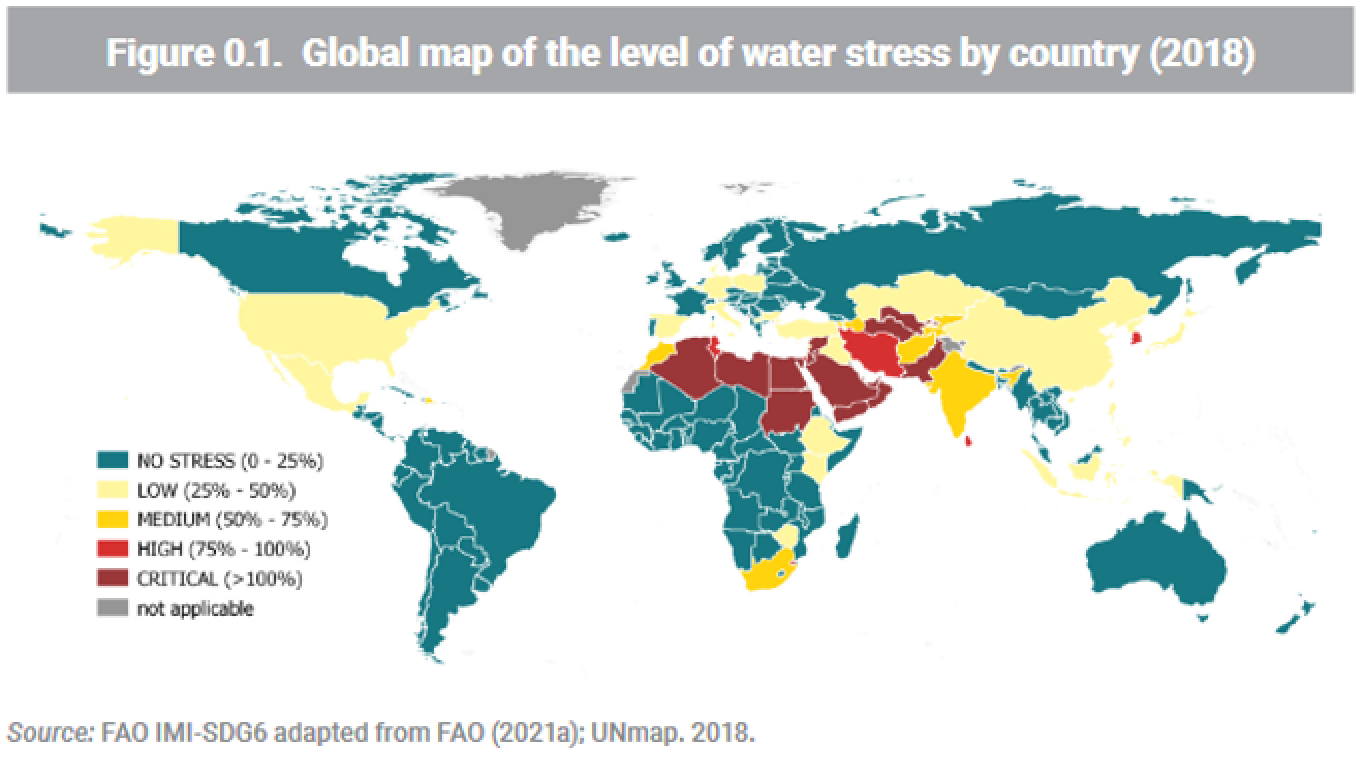This report presents an update of the latest consolidated data in the monitoring process of indicator 6.4.2, which provides an estimate of the pressure exerted by all economic sectors on a country's renewable freshwater resources. It also considers environmental flow requirements since these are essential to maintaining ecosystem health and resilience.
At the global level, 18.4 percent of the total renewable freshwater resources available were being withdrawn in 2018. Although this figure may seem safe, it hides large regional, national and subnational variations. On average, 10 percent of the global population lives in countries with high or critical water stress, which has a significant impact on water access and availability for personal needs.
Agriculture continues to be the most demanding sector in terms of freshwater withdrawals in most of the basins. It is the dominant withdrawing sector in most of the highly and critically water-stressed major basins, with some exceptions in basins with big or densely populated cities.
In addition to efficient water distribution systems and sustainable agriculture, reuse of wastewater is a key strategy in reducing water stress, together with water-saving technologies, green and hybrid technologies, and awareness campaigns to reduce the use of water in households and encourage sustainable diets and consumption.

| Year of publication | |
| Publisher | FAO and UN Water |
| Geographic coverage | Global |
| Originally published | 31 Aug 2021 |
| Knowledge service | Metadata | Global Food and Nutrition Security | Climate extremes and food security |
| Digital Europa Thesaurus (DET) | waterAgriculturefood securitySustainable development goals |
